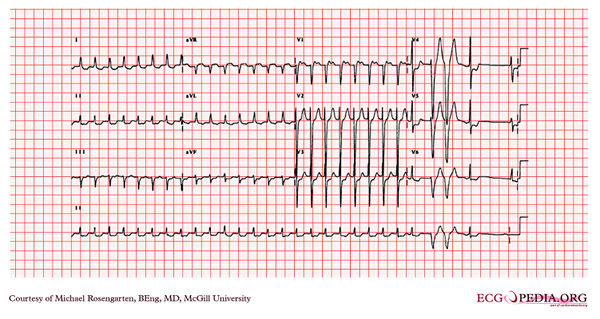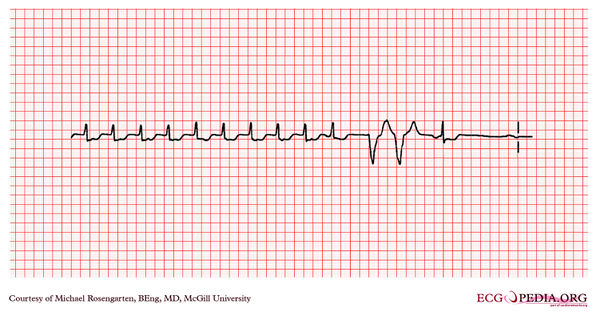McGill Case 345
| This case report is kindly provided by Michael Rosengarten from McGill and is part of the McGill Cases. These cases come from the McGill EKG World Encyclopedia.
|

This is an interesting recording that shows a supraventricular tachycardia. It is somewhat unusual presentation for someone with angina. The arrhythmia terminated with adenosine which has a powerful cholenergic effect that blocks conduction through the AV node. The arrhythmia terminates at the red arrow in the 12 lead electrocardiogram. Clearly, in the blow up of the rhythm strip, the deformation of the beginning of the ST segment ( turquoise arrows) changes (yellow arrow). This is due to retrograde block in the AV node. The termination of the arrhythmia is evidence that it is reentrant and dependent on conduction through the AV node. This is AVNRT as opposed to AVRT for two reasons. Firstly the Rp' , or the time from the beginning of the QRS to the beginning of the p' is short of the order of 80 ms and AVNRT tends to have the p' close to the QRS as opposed to AVRT where the P wave usually sits on the ST segment. Also Adenosine usually has little effect on the conduction down an accessory pathway and termination of the arrhythmia in the retrograde direction suggests the AV node was the return path and not an AV pathway. Finally the conducted QRS complexes on return to sinus rhythm do not show delta wave of ventricular pre-excitation. Finally note the ventricular couplet seen on termination, this is not aberrant conduction and not conduction over an accessory pathway.

